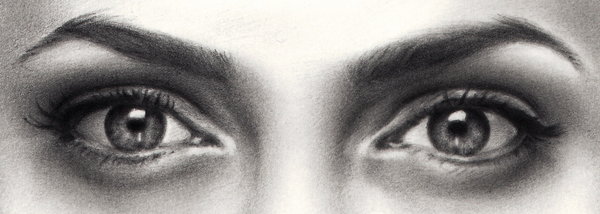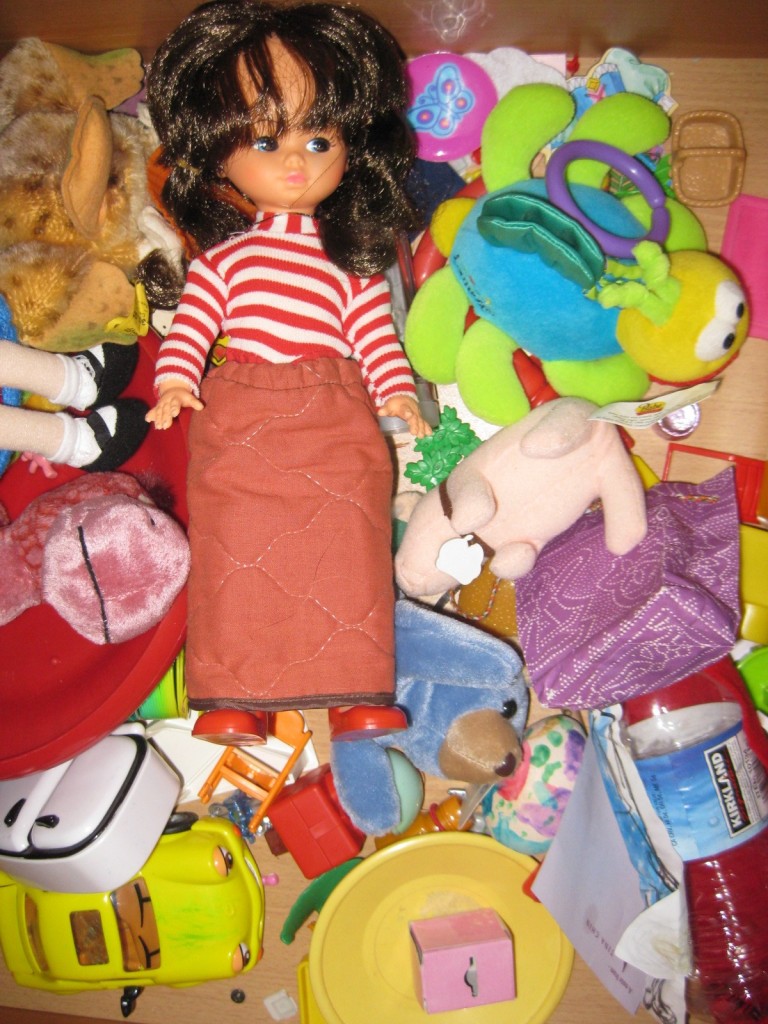What did you eat for dinner one week ago today?

Like most people, you probably can’t remember.
If I had asked you the same question 5 minutes after leaving the table, you would, most likely, have been able to answer accurately.
When you responded to my question, a moment ago, you tried to access your visual memory.
Visual Memory refers to the encoding, mental storage, as well as the ability to retrieve things that have been seen. Memory of this kind is different from other types, for example, recalling facts or music.
This type of processing gives you the ability to put information from your visual experience into memory… visual images of objects, places, animals or people.
How many of the toys in this picture can your child recall after looking at it for a few minutes?
When you talk about the “mind’s eye,” it’s the visual memory you’re referring to.
The 2 types of visual memory are:
- Short-term – often called “visual working memory”, this is where visual information is temporarily stored. This is the type of memory you use to remember what you most recently ate or the face of the person you just met.
- Long-term – the ability to recall something that was seen some time ago. The things on which you place a high level of meaning, or expectation based on past results, can remain in your memory forever.
In school, visual memory involves work with pictures, symbols, numbers, letters, and especially words.
This skill is critical for reading comprehension and spelling.
By the way, research has shown a link between sleep and enhanced visual memory. So you want to make sure your children get adequate sleep, every night. Younger children also need their daytime naps.
Should you have your struggling or failing child checked for visual memory difficulties?
If s/he is demonstrating the following –
- Prolonged time spent copying assignments
- Difficulty recognizing the same word on the next page
- Difficulty retaining what is seen
- Trouble remembering phone numbers
- Challenge remembering the spelling of familiar words with irregular spelling
- Difficulty remembering what the letter looks like for each phonics sound
Yes, you should.
Begin increasing your child’s visual memory with the familiar Concentration/Memory Game.
- Choose cards with simple clean pictures
- Begin with 3 or 4 pairs, then increase the number of pairs as s/he improves
- “Lose” gracefully often so your child can get a feeling of success and build on it.
Can you add another simple everyday game that would help to improve your child’s visual memory?


I’m at the age (61) where I, and my friends, are fearful of losing some or all of our mental and physical abilities. I’ve never been that good at visual games. When my son (who is grown) was young I would play games like The Memory Game with him and I was the one with the difficulties, not him. I have a lot of problems remembering phone numbers – I’ve always had. I’ve had problems with spelling all of my life. I never found a spelling quiz in school that I couldn’t fail, no matter how hard I tried. Although I have no problems recognizing letters and words, I do have at least one cousin who has dyslexia. Yet, I excel in certain other types of memory. I can remember details about projects I worked on at work 15 years ago that have co-workers in amazement. In reading your post, I think some things in my life are beginning to make sense.
I’m happy to be of help, Alana. Just know that difficulty with visual processing is no indication of limited intelligence. We each have an area we are working to improve. If you consistently do the exercises, you’ll see some improvement.
Great info. I am a virtual learner. Some people (not I :)) even have a photographic memory.
I think another helpful game is “I Spy”.
When I was a child, I thought I had a photographic memory. Oh the details I would recall. But alas, not now. Recently I have begun to do some brain exercises to improve my brain health.
I Spy is excellent for improving visual memory, as well as visual figure-ground and visual sequencing.
Just to keep my own mind working well, I’ve started using Lumonsity. I only play the games they offer on the iPhone. Plus, I can only play 3 per day because I have a free membership. I have noticed that I’m remembering things better without writing them down all the time.
For students, I’ve always liked to play games, too. It seems that the fun of games in school disappeared for several years due to so much testing; however, it’s returning because it works.
Thanks for the post to remind people that memory games work for children and adults.
You’re welcome.
One of the best ways to instill a life-long love for learning is to teach using fun and games.
Glad to hear about your brain exercises. Just like walking, running and other physical exercises tone and fit the body, brain exercises tone and make the brain more healthy.